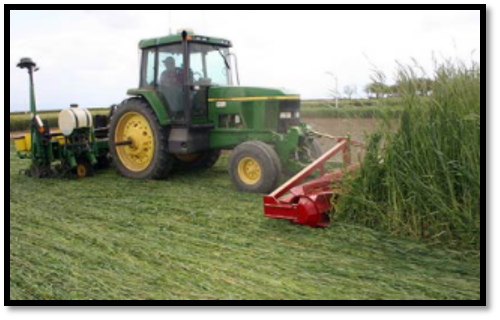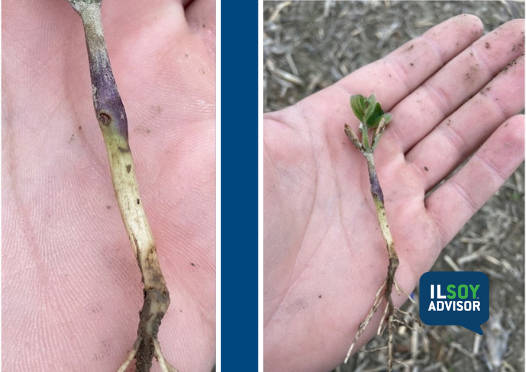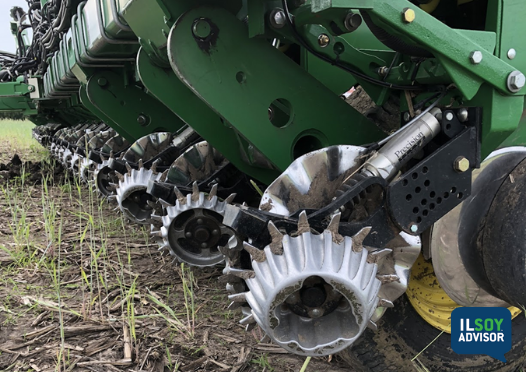ILSOYADVISOR POST
Quick Tips for Terminating Cover Crops
For many producers, utilizing cover crops in their farming system can be a big leap of faith. In several situations, the cover crop has one opportunity to prove itself and it only takes a few hiccups to get kicked off the farm. Now, I know there are several cover-croppers across Illinois that have adopted cover crops into their system and haven’t looked back. When I visit with these producers the common theme is that they had a very good plan to establish the cover crop and a very good plan to terminate the cover crop. As spring 2021 planting is upon us, here are some quick tips for a successful cover crop termination and maybe some out of the box concepts to help navigate your future Cover Crop Journey.
Review the type of cover crop you planted last fall. Producers would have decided during planting if they are using a single species mix or a combination of species to make up the desired mix. It’s important to understand what all was planted to make preparation for the spring cash crop more effective.
Winter Kill: Crops that will naturally terminated by spring
Examples: Oats, Radishes, Turnips
Non-Winter Kill: Crops that need to be terminated in spring so that it will not compete with the cash crop
Examples: Cereal Rye, Triticale, Wheat
Once you have decided that you have a Non-Winter Kill cover crop, it is time to evaluate your options for quality termination.
Herbicide Option: Considerations for terminating a cover crop
- Make sure the herbicide (glyphosate) is being applied at proper rates and proper volume (20 GPA) to make sure enough Active Ingredient can make its way into the plant and translocate to effectively terminate the cover crop.
- Herbicides like glyphosate needs good environmental conditions for the Active Ingredient to translocate.
- Make sure the cover crop is actively growing.
- Make sure days following application are in warming trends, with good sunlight, and nighttime temperatures are not going to get too cold.
- If you are applying your own cover crop “burn-down” you can be flexible and timelier. If you are hiring this service out, it’s important to give good instruction of what you want done and when. Make sure to give them plenty of heads up of this task, as it’s hard for companies to reallocate employees and equipment if they already have a plan developed. Be proactive in communicating your needs.
Non-Herbicide Option: Considerations for terminating a cover crop
- Crimping has become an increasingly popular option for terminating cover crops.
- Crimping allows the cover crop to develop more biomass that can be beneficial for reducing weeds and keeping the soils cooler and protected.
- A cover crop producer has several options of how they can incorporate a crimper into their system.
- Crimping can be done prior to planting with a pull behind crimper.
- Crimping can be done during planting with a front tractor mounted crimper while pulling the planter.
- Check out this YouTube video as an example: (211) Advances using the roller-crimper for organic no-till in Wisconsin - YouTube.
- Crimping can be done with smaller crimper units that are mounted on the planter.
- Check out this YouTube video as an example: (211) ZRX Roller Crimper on 1770NT Planter in Nebraska - YouTube.


To learn more about crimping tools, check out these additional resources:
NINJA | The Cover Crop Crimper Manufactured by Farmers (ninjacrimper.com)
Crop Rollers | Cover Croproller | I & J Manufacturing
5500 Cover Crop Devastator™ - Cover Crop Roller Attachment - Yetter Co





Comments
Add new comment